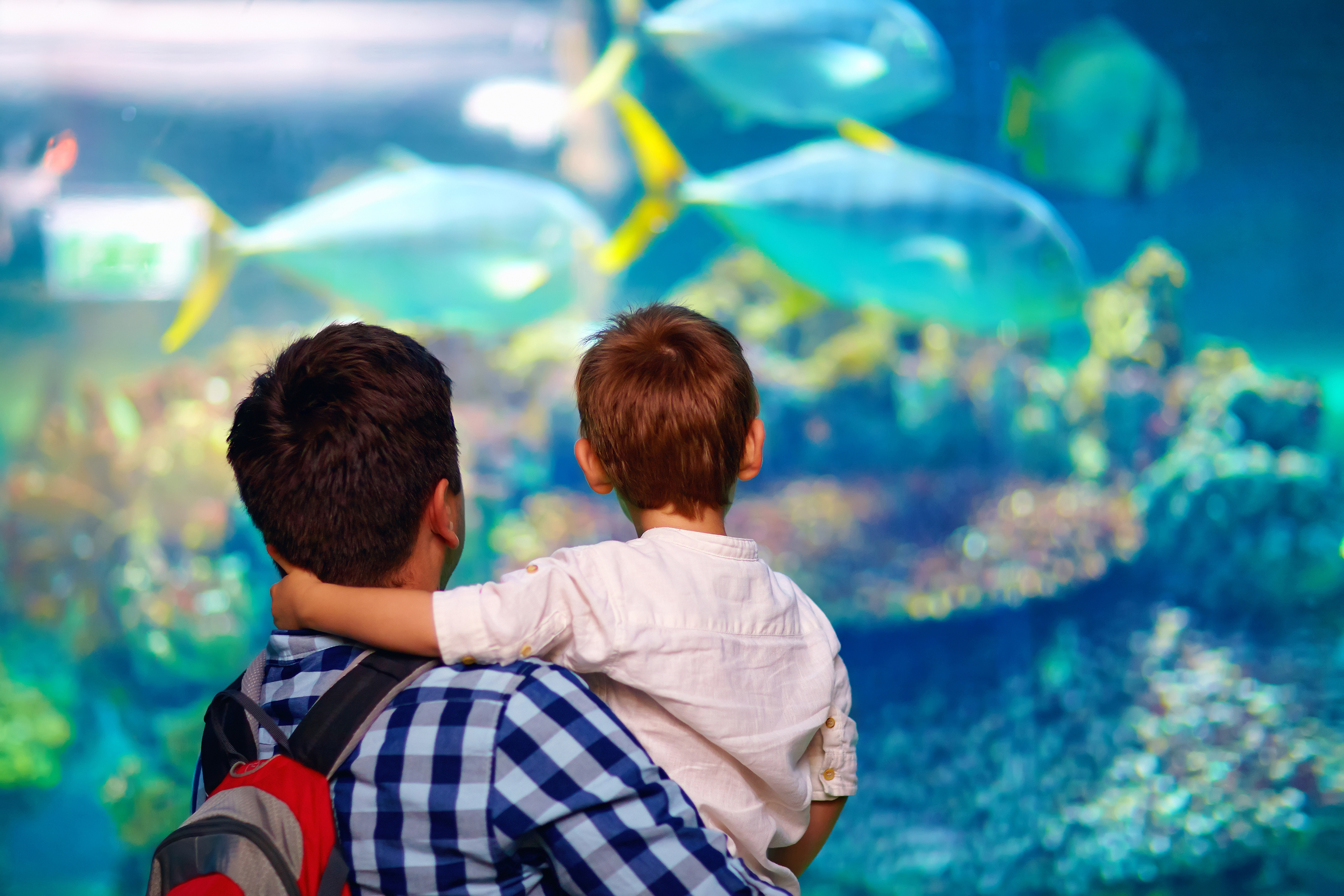The summer is nearly over, but there’s still time to spend with your kids before the hoopla of the new school year starts up. Even if you didn’t get to go away this year, there are plenty of opportunities to visit area attractions or revisit some family favorites.
If you’re planning to take some day trips to the local children’s museum, zoo, aquarium or nature preserve, it helps to get your bearings before heading out. Experts from top attractions across the country share their tips for maximizing your visit with young children without going overboard.
Small World
If you have a toddler or preschooler, a children’s museum is the perfect place to explore his or her surroundings in a safe, educational setting. Jeri Robinson, vice president of early childhood initiatives at the Boston Children’s Museum, credits these types of places for offering a wide variety of age-appropriate activities. “Parents often say that they didn’t know that their child even liked something…it’s a way to see your kids in a completely different light,” she says. Plus, children’s museums provide “the opportunity to see kids of similar ages from different backgrounds, all playing together,” she adds.
At first glance, parents may be inclined to let their kids take advantage of all the museum has to offer in one full swoop, but Robinson advises otherwise to avoid museum fatigue. “Don’t feel you have to do it all; identify two or three things that your child really wants to do and take breaks,” she offers. For younger children, try to steer clear of activities that may be too advanced—and can become frustrating.
It also pays to know your child’s temperament and to honor that. “Sometimes watching something can be enough for a particular visit,” notes Robinson. “Observing is an activity, too. Kids are developing their own confidence, respect for others and their own learning style.”
Where the Wild Things Are
Zoos are a perennial family favorite for kids of all of ages, but in today’s increasingly digital world, they hold even greater value. “As we have become a more technological society, research shows that children have become more disconnected from nature,” says Michelle Kolar, vice president of education for Zoo Atlanta. “Nature-based places such as zoos can begin to create a child’s connection to the natural world for a fun, engaging experience.”
Not reserved just for seeing animals, zoos offer kids a place to socialize in specifically designated kids’ zones and playgrounds and to bond via parent and me-type programs. Learning about animals and their natural habitats can begin as early as age 1, through sights, sounds and smells, which extends well into the preschool years. “Harnessing all the senses (kinesthetic, visual, smell and auditory), young explorers at 3 or 4 years of age can practice communication by describing what they are sensing to their parents,” she notes.
Before heading out to zoo with young children, check out the zoo’s website to see which animals live there, so you can create a plan for definite pit stops. Starting with the animals you most want to see is best for young kids that tire easily. “A little research can also lead you to discover a ‘must-try’ experience that you didn’t know about, such as a ropes course or animal encounter,” adds Kolar. And while you’re on the grounds, check in with staff and volunteers that can give you the insiders’ guide by answering your questions and educating you on the latest goings on.
Planting the Seeds
Another option to introduce kids to the natural world is at an arboretum or botanical gardens, where they can experience the outdoors firsthand. “These spaces serve as a valuable, educational hub for learning about how to pot and care for a plant, how a plant ‘works,’ how they change and reproduce and how the whole environment is connected,” explains James Boyer, vice president for children’s education at The New York Botanical Garden.
With the growing trend of public gardens offering seasonal or year-round exhibits, families can also share this time to enjoy more kid-friendly exhibits, like a holiday train show or orchid show. Children’s garden zones also offer a place for kids to explore their surroundings in a hands-on format, where they can water plants, dig in the dirt and play in treehouses.
To make the most of your visit, figure out in advance what sites you’d like to see and tailor your time accordingly, even if that means not seeing everything in one outing. “Maximizing the visit depends on the goal for the visit, the age level of the visitors, their stamina and the weather,” points out Boyer. “Overall, the parents who seem to have mastered the botanical garden visit avoid doing too much in one day.”
The Water’s Fine
Your kids may have had their fair share of the beach, lake or pool this season, but aquariums offer another option in the world of water fun. “There is research to show that watching fish has a relaxing and stress-relieving effect on people, including children,” says Brooke Gorman, director of science education for the Tennessee Aquarium in Chattanooga. “Aquariums are also great places to take children because there is always something new to see, whether it is your first time or you are a regular visitor. The animals may be interacting in different ways or you might be there at a different time of day to get a different take on an exhibit.”
Unlike other attractions that may have an age restriction, aquariums offer an even playing field, making it easier for parents to interact with their child one-on-one. To help start a dialog with younger children, Gorman suggests asking pointed questions on what they see in a particular exhibit. “If families visit with an infant or early toddler, parents can talk about fish of different colors or point out that a particular animal is ‘big’ while another is ‘small,’” she offers. “For older toddlers, parents might ask them to identify the colors or try to move like a particular animal. Preschool-age children love trying to move like an animal as well. They can also start to count fish or look for patterns to identify two fish that are the same.”
Touch tanks are another big draw during aquarium visits, especially for kids that love a particular sea creature. “Encouraging children to take advantage of touching…a stingray in a touch tank can give them a great experience to talk about while still offering a safe space to learn,” notes Gorman. “We do not force anyone to touch an animal if they do not want to, but we are happy to help families learn more about our animals and exhibits to increase their confidence.”




